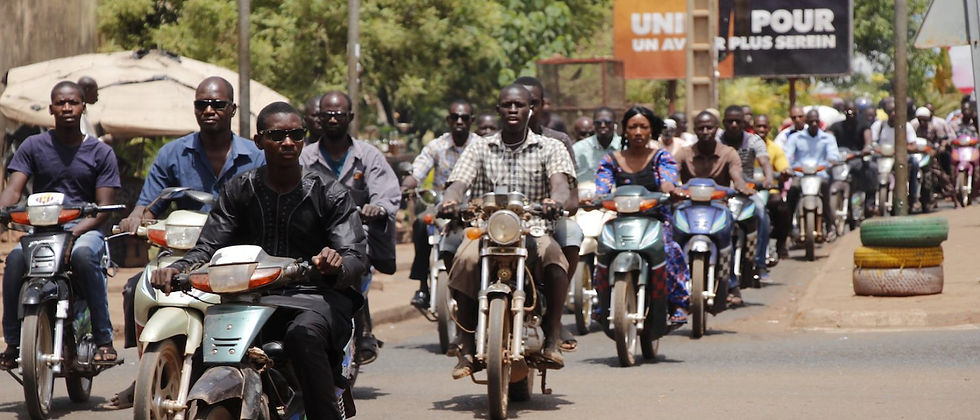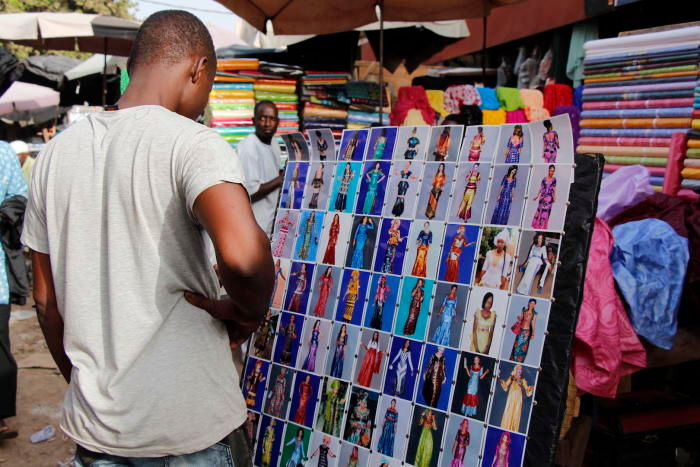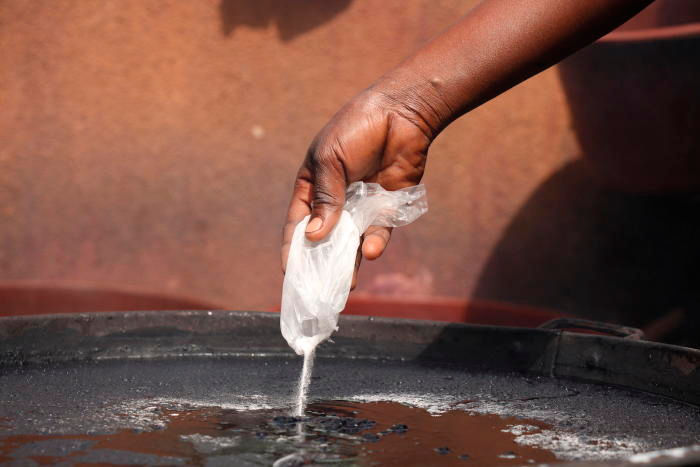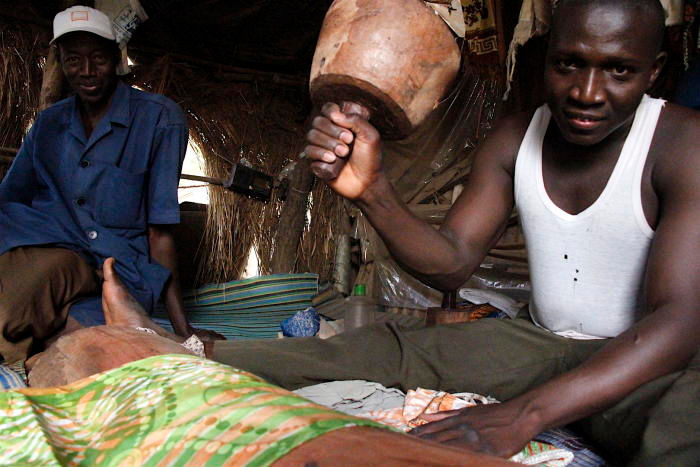MALI’S BAZIN RICHE INDUSTRY IS BRINGING TRADITIONAL WEST AFRICAN WEAR TO THE WORLD
- Mel Bailey
- Jun 7, 2018
- 4 min read

Brightly colored fabric with a polish reminiscent of a freshly waxed car is cut and stitched daily to frame the bodies of “well dressed” West Africans. The fabric is called Bazin Riche (or damask) and the higher the quality, the more expensive – and the more lucrative. In Mali, that means the Bazin Riche industry is attracting lots of people.
“West African traditional wear is Bazin,” said Fatoumata Diaby, founder of Diaby Teinture, a commercial Bazin Riche business in Bamako, “everyone in my family dyed and sold the fabric since ‘68.”
Bazin Riche is made at textile factories all over the world, with the most expensive and desired qualities coming from Germany, Holland and Austria. It arrives in West Africa in shipping containers that hold thousands of flat, cellophane packages, each protecting the white, shiny raw materials within.

From there, those materials are handed off to drivers who take the fabric inland to transporters who will take it to either a wholesaler for mass consumption by the commercial industry, or to local dyers who tint the fabric for special orders.
Along the covered alleyways in Marche Rosé, the largest market in Bamako, Alou Bassam can be found in his boutique at the market’s center where he sells high end Bazin.
“All the fabric comes from the ports. I know someone who drives from Dakar to here. But Mali is known for their quality of colors and dyeing. This is local, this is local…” said Alou Bassam as he ran his fingers along piles of multihued fabric, known in Bamako as thioupe.
Throughout West Africa, Mali is considered by many as the best place to get Bazin Riche with its higher quality dying and more vibrant colors and patterns. Mali’s reputation is so much so, many small business owners like Diaby said they are able to run their businesses solely off of individual customer orders.

“Before, the best was Sierra Leone, then Cote d’Ivoire, now it’s Mali. It’s how we dye,” Diaby said from her plastic folding chair tucked away from the hot sun. “Some people dye more than once, or dye for more than 12 hours, that’s why they get the color on their skin, but we have quality” said another women nearby while pouring black dye onto bright orange folded cloth.
Once dyed, the high gloss material goes for about $12 a meter and is usually sold in lengths of 3 or 4 meters. Though pricey to buy for many locals to buy for themselves, the industry has created new job opportunities throughout the region.

There are those who beat the fabric after the fabric is sold, with a large wooden mallet known locally as a finigochila, to “bring out the shine.”From Kayes to Bamako, you can easily stumble upon a village where the sound of wood banging on wood fills the air.
But glossing the fabric is not an easy task. The 35-pound wooden mallets first need to be glazed with wax at the beginning of each day. After, the mallet is used to tap the fabric over and over until it shines. The service can range from ‘somewhat shiny’ to ‘really shiny’ with ‘really shiny’sometimes taking up to 3 hours of tapping.

Along with the fabric beaters, dyers, buyers, shippers, drivers, tailors, tinters, shop owners and boutique workers are all part of the local Bazin industry in Mali. Though training is needed, dyeing and batting the fabric can be open to anyone willing to commit themselves to learning the traditional ways passed on from the older generations on to the next.
“I wanted to try it, I watched for 3 weeks before they let me start. That was 2 years ago,” Gigi Koné said while putting the finishing touches on custom ordered Bazin. Koné uses the wooden mallet to make new designs shine. “Anyone can bat, you just have to train, dyeing is for women but batting is for men. Most men in my family do it,” said one of the village elders working alongside Koné.

Although many are finding work, the Bazin industry is highly competitive. Boutique owners constantly scramble to keep up with new styles and prints being released.
“We have a new color every other day, they’re crazy, man. Or a new pattern, what you see here today, buy, because if you come back next week, there will be something new. But at least you could be the only one to have that fabric…” Alou Bassoum said from behind his elevated Bazin booth.
With demand high and new fabric coming out all the time, there is also lesser quality fabric being produced and the knock-off Bazin industry is just as prominent as the real thing. There are many levels of quality for Bazin, which allows some with ‘stricter budgets’ to be part of the allure of the higher priced fabric. But for those thinking they’re buying the expensive, high quality fabrics who are left feeling duped when the colors change after washing, or crease when worn, there is unfortunately little recourse available to them.
In Mali, there are no regulatory authorities with control over the knock-off Bazin industry or how to protect commercial sellers of the real thing. Those who are involved in the industry have had to become some of the savviest entrepreneurs in the country. The best in the business are focused on creating high quality products that are in demand, even internationally, and are using that demand to grow the awareness of Mali’s place in the Bazin Riche industry and grow their businesses.
With tailors creating new designs for their clients and dyers experimenting with new techniques for layering dyes and patterns, the demand for Bazin Riche fabrics looks like it will continue to grow and with it, the local industries that support it. But it will be up to the small boutique owners and local wholesalers who rely on word of mouth to preserve their trusted ways and spread their traditions across the continent and around the world.



Comments